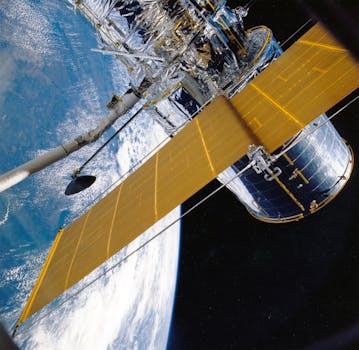Navigating the Skies: Insights into Recent Satellite Telecommunications Innovations

Navigating the Skies: Insights into Recent Satellite Telecommunications Innovations
Navigating the Skies: Insights into Recent Satellite Telecommunications Innovations have transformed the telecommunications landscape, enabling faster, more reliable, and widespread connectivity. The recent surge in satellite telecommunications innovations has far-reaching implications for various industries, including telecommunications, navigation, and remote sensing. In this article, we will explore the latest developments and insights in satellite telecommunications, highlighting the key trends, technologies, and applications that are shaping the future of global connectivity.
Satellite telecommunications have come a long way since the launch of the first commercial communications satellite, Intelsat 1, in 1965. Over the years, significant advancements in satellite technology have led to improved performance, increased capacity, and reduced costs. The advent of new satellite constellations, such as OneWeb and Starlink, has further accelerated the growth of the satellite telecommunications market. These constellations comprise hundreds of small satellites in low Earth orbit (LEO), providing high-speed, low-latency internet connectivity to underserved communities and remote areas.
Advances in Satellite Technology
Recent years have witnessed significant advances in satellite technology, driven by innovations in materials science, propulsion systems, and antenna design. The development of new satellite platforms, such as the Airbus Eurostar Neo and the Lockheed Martin A2100, has enabled the creation of more powerful, flexible, and efficient satellites. Additionally, the introduction of advanced propulsion systems, such as electric propulsion and hall effect thrusters, has improved satellite maneuverability and extended their lifespan.
The increasing use of Gallium Nitride (GaN) and Gallium Arsenide (GaAs) technologies in satellite components has also enhanced the overall performance and efficiency of satellites. These technologies offer improved power density, reduced size, and increased reliability, making them ideal for use in satellite communications, navigation, and remote sensing applications.
Applications of Satellite Telecommunications
Satellite telecommunications have a wide range of applications, including broadband internet access, mobile connectivity, navigation, and remote sensing. The use of satellite-based internet services has become increasingly popular, particularly in areas where terrestrial infrastructure is limited or non-existent. Satellite-based mobile networks, such as those provided by Thuraya and Inmarsat, offer global coverage, enabling seamless communication and connectivity for users on-the-go.
Satellite navigation systems, such as GPS and GLONASS, have revolutionized the way we navigate and track objects. These systems provide accurate location information, velocity, and time, enabling a wide range of applications, including aviation, maritime, and land transportation. Remote sensing applications, such as Earth observation and weather forecasting, rely heavily on satellite-based sensors and imaging technologies, providing valuable insights into our planet’s climate, natural resources, and environmental health.
Challenges and Future Directions
Despite the many advances in satellite telecommunications, there are still several challenges that need to be addressed. One of the major concerns is the increasing amount of space debris in Earth’s orbit, which poses a significant threat to operational satellites and the environment. The development of sustainable and responsible space practices, such as debris removal and mitigation, is essential for ensuring the long-term viability of satellite telecommunications.
Another challenge is the need for improved spectrum management and regulation, as the growing demand for satellite services puts pressure on the available frequency bands. The development of new spectrum-sharing technologies and regulatory frameworks is necessary to ensure efficient and equitable use of the limited spectrum resources.




